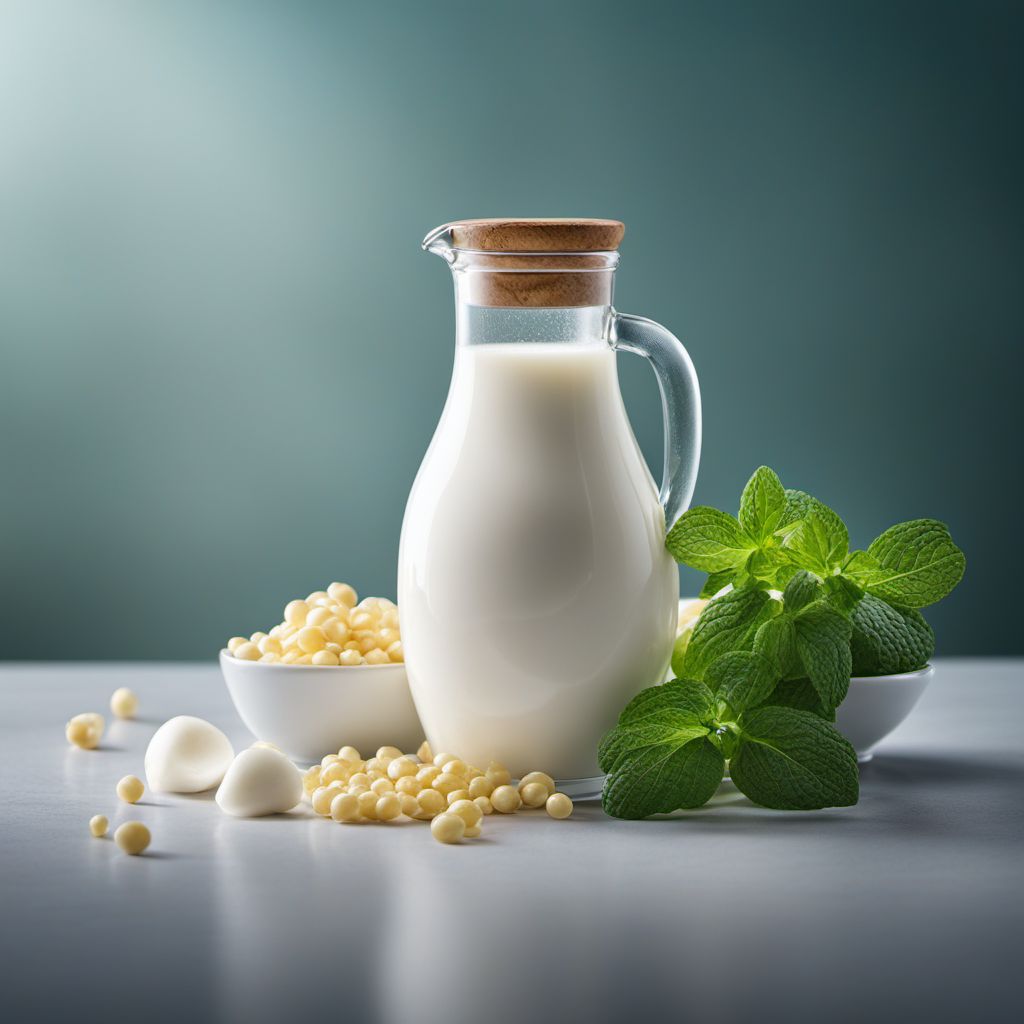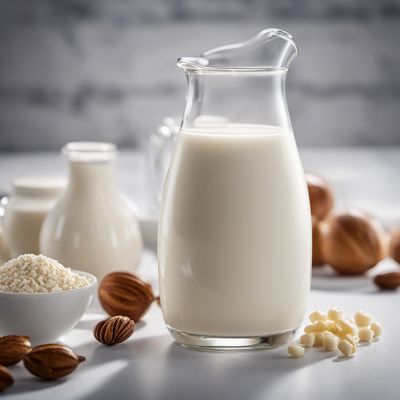
Ingredient
Milk
The Nourishing Elixir of Life
Milk is a nutrient-rich liquid produced by mammals, including cows, goats, and sheep. It is widely consumed as a beverage and used in various culinary applications, such as baking, cooking, and making dairy products. Milk is characterized by its creamy texture, white color, and mild, slightly sweet taste.
Origins and history
The consumption of milk dates back thousands of years and has been an integral part of human diets across different cultures. The domestication of animals for milk production revolutionized food systems and provided a reliable source of nutrition. Today, milk is a staple ingredient in many cuisines and is valued for its versatility and nutritional benefits.
Nutritional information
Milk is a rich source of essential nutrients, including calcium, protein, vitamins (such as vitamin D and B12), and minerals. It provides hydration, supports bone health, aids muscle recovery, and contributes to overall well-being. The nutritional content may vary depending on the type of milk (e.g., whole, skim, or plant-based alternatives).
Allergens
Milk is known to be a common allergen, particularly for individuals with lactose intolerance or milk protein allergies. It is important to consider suitable alternatives or opt for lactose-free or plant-based milk options if necessary.
How to select
When selecting milk, choose fresh, pasteurized milk that is stored at the appropriate temperature. Check the expiration date to ensure freshness. Additionally, consider factors such as fat content (whole, low-fat, or skim) and whether you prefer conventional or organic milk.
Storage recommendations
To maintain the freshness and quality of milk, store it in the refrigerator at a temperature below 40°F (4°C). Keep it tightly sealed in its original container to prevent absorption of odors and flavors from other foods. Avoid exposing milk to direct sunlight or extreme temperature changes.
How to produce
Producing milk requires specialized knowledge and equipment, making it impractical for amateurs to produce at home. However, individuals can support local dairy farmers by purchasing fresh milk directly from them or by participating in community-supported agriculture (CSA) programs.
Preparation tips
Milk can be used in a multitude of ways in the kitchen. It serves as a base for beverages like coffee, tea, smoothies, and milkshakes. In cooking and baking, milk adds moisture, richness, and tenderness to dishes such as soups, sauces, custards, pancakes, and cakes. It can also be transformed into various dairy products like cheese, yogurt, butter, and ice cream.
Substitutions
Plant-based milk alternatives, such as almond milk, soy milk, or oat milk, can be used as substitutes for individuals with lactose intolerance or those following a vegan diet. However, the flavor and texture may differ slightly from traditional dairy milk.
Culinary uses
Milk is a staple ingredient in numerous culinary traditions worldwide. It is commonly used in Western cuisines for dishes like macaroni and cheese, creamy soups, and classic desserts like crème brûlée. In Asian cuisines, milk is often incorporated into curries, sweets, and beverages like bubble tea. Its versatility makes it a valuable ingredient in both savory and sweet recipes.
Availability
Milk is widely available in grocery stores, supermarkets, and convenience stores worldwide. It is produced and consumed in various countries, with notable dairy industries in regions such as Europe, North America, and Oceania.
More ingredients from this category
Recipes using Milk » Browse all

Skyronnes with Lemon and Herb Sauce
Mediterranean Delight: Lemon and Herb Skyronnes

Creamy Polenta with Savory Mushroom Ragout
Velvety Polenta Delight with Umami Mushroom Medley

Thanksgiving Feast
Harvest Delights: A Bountiful Thanksgiving Feast

Turkish Eggplant Casserole
Sultan's Delight: A Regal Turkish Eggplant Casserole

Angolan-style Egg Bread
Savory Egg Bread with a Taste of Angola

Krampogača - Croatian Savory Pancake
Savory Delight: Krampogača - A Taste of Croatian Cuisine

Achma - Georgian Cheese Bread
Savory Layers of Cheesy Goodness: Achma - A Georgian Delight

Balochi-Style Bagel
Spiced and Grilled Bagel Rings: A Balochi Twist on a Classic

Sami-style Creamy Porridge with Lingonberry Jam
Arctic Delight: Lingonberry-infused Creamy Porridge Sami-style

Estonian Kama Pancakes
Kama Delight: Estonian Pancakes with a Nutty Twist

Toc' in Braide - Italian Savory Bread Pudding
Savory Delight: Toc' in Braide - A Taste of Italian Comfort

Ballokume Elbasani - American Twist
Albanian-Inspired Sweet Treats with an American Twist

